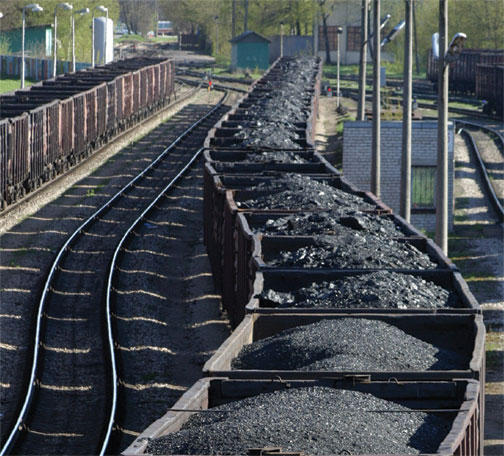
How President Trump Can Help Coal Country
The cloud of uncertainty surrounding climate change and energy policy grew Tuesday night following President Trump’s first address to Congress. During the address, President Trump failed to mention either of these two policy areas, instead opting to promote his intentions to assist struggling coal country. He did, however, discuss his desire to work across the aisle on clean water and air initiatives, but unfortunately any concrete policy goals were omitted.
The absence of energy and climate policy discussion is alarming as climate change is an imminent threat to our national and global security. The security ramifications manifest themselves through resource scarcity, extreme weather, food scarcity, water insecurity, and sea level rise. Preparing for the consequences of climate change is the best course of action for preventing potential disaster. The President needs to provide his specific policy intentions, and ideally implement policies that will address climate change and pull away from non-competitive energy sources such as coal. It is possible to accomplish this while still looking out for coal country. One potential option he should seriously consider is a new proposal for a “Carbon Dividend”.
Put simply, a carbon dividend entails setting a price on carbon emissions in the hope of encouraging energy efficiency and fuel switching to carbon-free energy, and as a result limiting the impact of climate change. The proposed dividend would start at $40 per ton of carbon emitted, thus encouraging businesses to invest in low-carbon equipment upgrades to save money in the long run. The revenues from this carbon price would then be recycled as a “dividend” check to every American.
The push for this policy comes from the Climate Leadership Council, a group of influential Republicans that includes James Baker, Henry Paulson, and ASP Consensus Member, George P. Shultz. In a Wall Street Journal article featuring Mr. Shultz, “A Conservative Answer to Climate Change” he argues that a gradually rising carbon dividend is preferable over the heavy and complex Obama-era climate regulations. In principle, this should align very nicely with President Trump’s anti-regulation platform.
In addition to providing reassurance to businesses calling for increased certainty on carbon regulations, the idea of a carbon dividend has surprising bi-partisan support. Former presidential candidate, Al Gore has come out in support of the idea as have major oil companies, such as Exxon Mobil. The carbon dividend proposal that the Climate Leadership Council is backing is revenue-neutral, meaning it would not send any additional dollars to the federal government.
From a purely market standpoint, coal is no longer a practical or competitive energy source. This is primarily because of cheaper natural gas. The shale gas boom has flooded the U.S. energy market with natural gas, driving prices down, and pushing coal out. Trump himself even supports expanded drilling of U.S. shale. Coal dependent communities across the U.S. are suffering from a dramatic economic downturn, and it is not sensible to count on a resurgence of coal production to improve their situation.
In President Trump’s speech he made the statement, “Democrats and Republicans should get together and unite for the good of our country, and for the good of the American people.” This is very true, and a carbon dividend policy would be a pragmatic starting point. It is politically feasible, and could provide a revenue stream for every American allowing President Trump to fulfill multiple championed campaign promises. The time has come to forge a different path. While coal does not have a place in America’s clean energy future, coal workers and their families most certainly do. For the safety and security of the American public, President Trump needs to address climate change, and the clock is ticking.





